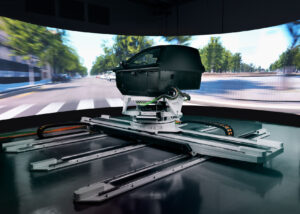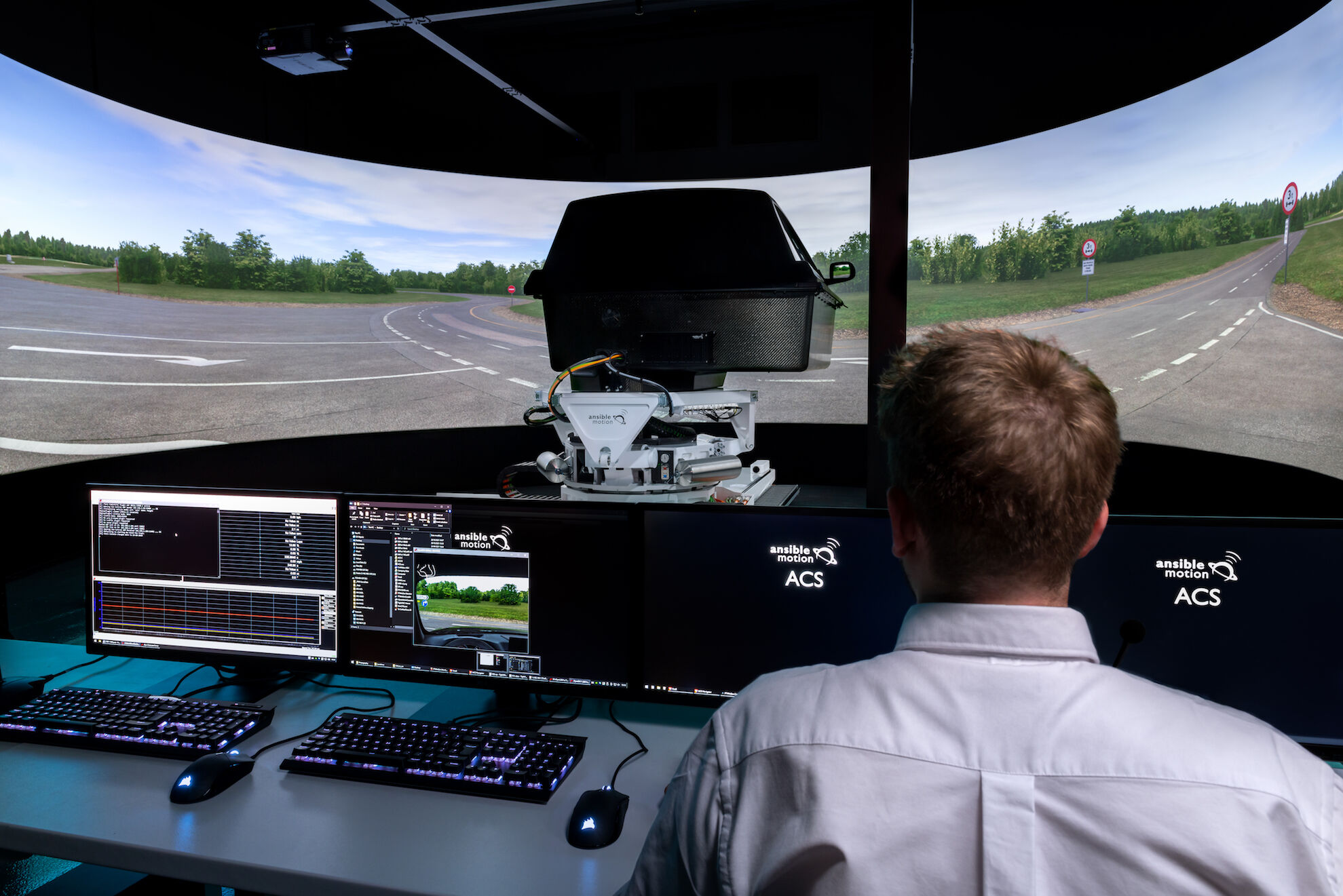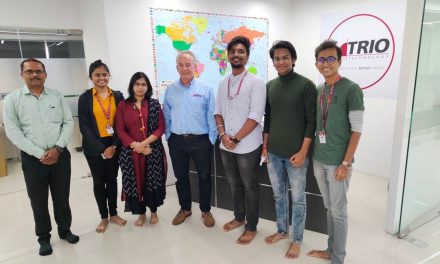The notion of using a driving simulator to develop and validate vehicles has been around for many years. In recent years, the market has shifted dramatically to a new generation of simulators that is expected to be more versatile and effective, to help car makers validate increasingly complex cars in the shortest time possible. With restrictions in time, the costs of real-world prototypes and a pandemic restricting travel to global test sites, simulation is providing much needed capacity to support manufacturers and suppliers. So effective are these simulators, that now more engineers want to use driving simulators for testing their commodities leading to more innovation in the sector. Companies like UK manufacturer Ansible Motion are developing ever more versatile simulators such as its Delta series S3, a fully dynamic and immersive tool for virtual test driving. Fully revealed earlier this year, the heart of this all-new driving simulator is the ability to provide a compelling motion experience. Design Solutions spoke to Ansible Motion engineer Ian Haigh about the motion developments that are a part of driving simulator designs, and why they have become critical in a changing automotive world.
Origins of motion
Early automotive simulators were often static devices, but as these started to be used by motorsport and race drivers, there was a growing need for adding motion. “Race drivers feel what a car is doing through their body – whether that’s the seat of their pants or their vestibular system,” says Haigh. “Visual cues tended to be registered slower by human beings, so it was realised that adding some element of motion would be more effective for them to feel a car’s behaviour, and, in the case of race drivers, find the limits of performance.”
Whilst some automotive driving simulators began using hexapod motion systems derived from aircraft simulators, Ansible Motion developed a motion platform that would be engineered specifically for ground vehicles. “The large machinery and payloads of hexapods had too much mechanical lag due to the mass and friction to be really useful for skilled drivers to employ,” suggests Haigh. “The acceptable motion and visual latency of aerospace simulators tends to be in the 100 to 150 millisecond range, and we wanted to create something that was an order of magnitude below that. That’s why we produced our Stratiform Motion System, or SMS. It’s a scalable mechanism with multiple layers, each controlling specific axes of motion that are directly associated with the six primary motion directionsrelevant for vehicle performance.”
Ansible Motion’s Stratiform 1 (S1) was the firm’s first driving simulator to include a dynamic motion platform and it was welcomed by the automotive engineering community and even adopted by a Formula 1 racing team. The S1 evolved organically into the Stratiform 2 (S2) in 2013, which became the heart of Ansible Motion’s Delta series, a product range of dynamic driving simulators. For nearly a decade, the Delta series S2 was widely regarded as one of the most immersive and realistic simulators available. It was trusted by leading car makers such as Ford, GM and Honda as well as more motorsports teams.

Continuous improvement
As a company focussed solely on ground vehicle simulation, Ansible Motion was constantly improving its technology, pouring all its R&D activity into new developments to keep it at the forefront. Most recently this saw the release of the Stratiform 3 (S3) motion system,claimed to be a ‘step-change’ in motion for automotive driving simulation.
The production version of the S3, revealed officially in February 2022, is at the centre of Ansible Motion’s new Delta series S3 Driver-in-the-Loop simulator offering, an all-new driving simulator designed to satisfy the growing demand for high-fidelity, high-dynamic, human-centric vehicle simulations. That need is real with advanced sales already confirmed to BMW, Continental, Honda R&D Co and Deakin University, Australia. In less than sixmonths, it has become the company’s fastest selling product to date.

Smooth operator
Ansible Motion claims that the Delta S3’s proprietary motion control system means human drivers can experience the full range of vehicle behaviours; from low-dynamic to high-dynamic with smooth, nuanced motion and extremely low latency. The key difference from the previous iteration, the S2, is the move to a greater motion space. Switching from the previous belt system to linear actuators and engineered steel rails has offered the opportunity for a scalable simulator, starting with a 4m-by-4m displacement footprint that is scalable up to 10m by 10m for surge and sway motion. “We switched to linear motors to deliver bothbetter and finer control over the longer displacements,” says Haigh. “We can also achieveacceleration levels that ensure vestibular motions are sustained for longer.” This is vital for car makers looking to evaluate driver assistance systems and provides a representative experience for aggressive manoeuvres such as lane changing and large bandwidth manoeuvres such as autonomous parking. “With the larger footprint, we have the ability to replicate some motions in 1:1 scale,” adds Haigh. “This requires less motion cueing, and we can focus on replicating real-world manoeuvres.”

Flexibility
The linear motors and proprietary software are crucial for controlling the motion to make the ground plane motion experiences as representative as possible. They also offer flexibility over the tool chain to create versions specific to customer requirements. The standard S3 delivers accelerations beyond 1G, velocities above 5m/s and class-leading frequency response above 40Hz. There is also fine resolution possible with the ability to have fractions of a millimetre of motion, an attribute appreciated for both road and track users.
Yaw the best
The new motion control system has also expanded the yaw from 45° to 360°. This full 360° dynamic yaw rotation enables the simulator to be capable of representing very tight corner turns, useful in motorsport or, for road cars, it is ideal for testing pedestrian detection systems.
Keep it simple
Another key innovation is its patent pending mechanism that carries the cabin. This system offers a further three degrees of freedom (heave, pitch and roll) to the motion profile. Thisdesign, developed in–house at Ansible Motion, means a vehicle cabin weighing up to 500 kg(up from 300 kg on the S2) can be exercised dynamically in all six degrees of freedom (the maximum possible for defining the motion of a body), at any point. This novel solution, using epicyclic gearboxes, avoids the usual, complex interactions between multiple motion controllers in the control system, which can lead to inconsistencies in the motion depending on the current position or velocity of the vehicle. It also eliminates the drastic reductions in usable motion space that can occur with parallel motion systems, and it reduces the complexity of controlling and tuning the motion system for different use cases. Suchversatility a key benefit for convincing those with the keys to the capital expenditure.
Lower servicing costs
The switch to linear motors from belts has also enabled Ansible Motion to extend the time between services by 100 per cent. “We’ve eliminated the servicing requirements for the carriages and bearings, reducing maintenance and costs to an annual inspection,” claims Haigh. “That can make a difference to a vehicle programme with less downtime and lower operating costs.”
Looking ahead, Ansible Motion has a further three orders for the Delta series S3, indicating the importance of motion for developing the next generation of road and race cars.
This article first appeared in Design Solutions May 2022



